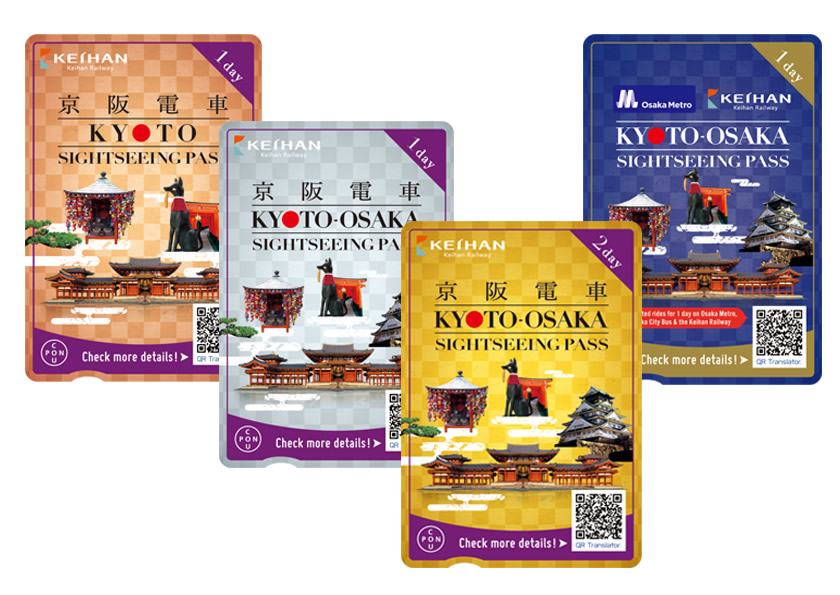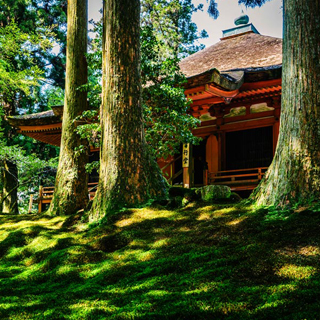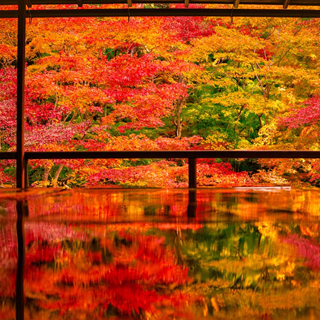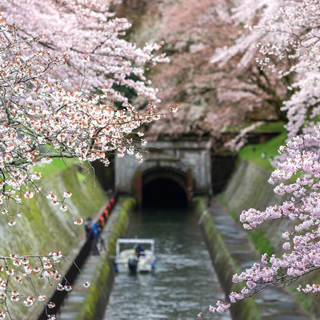Make the most of your trip to Kyoto with the discount unlimited-use sightseeing pass on the Keihan Railway
The historic Japanese city of Kyoto contains a wealth of sightseeing spots and places full of excitement. To make sure you have the best experience possible seeing these amazing places, we recommend traveling by train or on foot so you can reach them more quickly and efficiently. The Keihan Railway offers easy access to many famous sightseeing spots along its routes that are within walking distance, beginning with the popular Fushimi-Inari Taisha Shrine and including Gion, Kiyomizu-dera Temple, Sanjusangen-do Temple, and Byodoin Temple. It is also very convenient to use if you are staying in Osaka to travel to Kyoto more economically, since it connects to 5 lines of the Osaka Municipal Subway. In this feature, we introduce a special discount sightseeing pass that can be used for unlimited rides, only available to foreign travelers in Japan!
Traveling on the Keihan Railway from Yodoyabashi in Osaka will let you reach the nearest train stations to many famous places in Kyoto in less than 1 hour. Be sure to check the train route map for the closest stations to your sightseeing destinations before leaving.
- Details:
-
Day 1: Fully enjoying Osaka Castle and popular Kyoto locations
Our trip begins at Osaka Castle. Here, you can go up to an observation deck with a full view of the entire Osaka city area, and look out in the direction of Kyoto from the same place that Hideyoshi Toyotomi (the military general who built this castle and unified Japan in the year 1590) did long ago. After a 15-minute walk from Osaka Castle, you can board the Keihan Railway Limited Express at Kyobashi Station or Tenmabashi Station, and go straight to the terminal of Demachiyanagi Station in Kyoto. It is common for visitors traveling on their own to go to the final station of the train line, and then ride it back to their starting point while taking in the sights along the route.
- Points of Interest:
- Osaka Castle, Shimogamo-jinja Shrine, Heian-jingu Shrine, Samurai Kembu Theater, Gion / Hanami-koji / an area along Shira-kawa River, Kennin-ji Temple, Sanjusangen-do Temple, Kiyomizu-dera Temple, Tofuku-ji Temple
-
Osaka Area
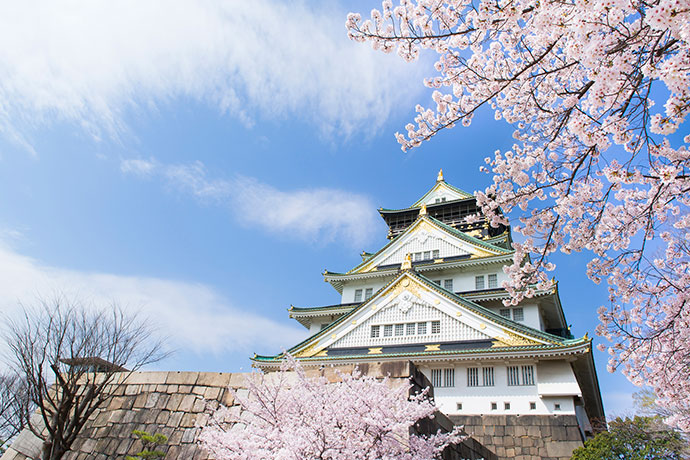
Osaka Castle
A castle built by Hideyoshi Toyotomi, decorated throughout in luxurious glory with gold shachihoko (mythical dolphin-like fish often used as roof decorations on Japanese castles) and other adornments. It was destroyed many times since its construction in 1583, and the current tenshukaku (the “control tower” of the castle) was rebuilt in 1931. The interior of the castle has been made into a museum, with an observation deck that offers a sweeping view of the Osaka city area. In spring, the plum garden in Osaka Castle park and the cherry blossoms set against the background of the main tower are extraordinarily beautiful.
- Access:
- 15-minute walk from Kyobashi Station (KH04) or Tenmabashi Station (KH03) * Code of the station name is the “station number”.
- Details:
-
Kyoto Area
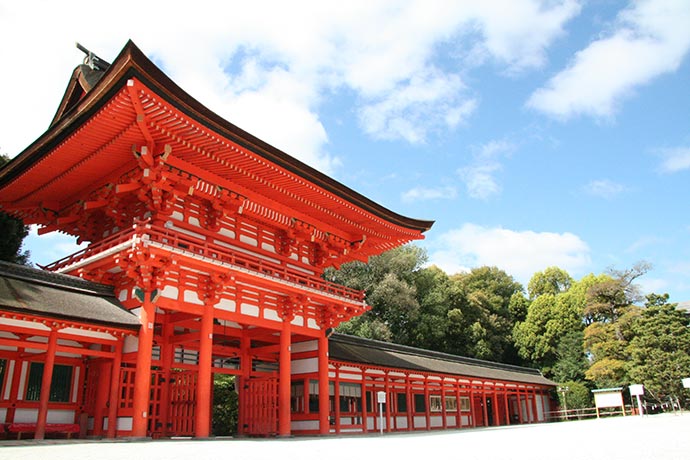
Shimogamo-jinja Shrine
An ancient shrine designated as a World Heritage Site, standing deep in the “Tadasu no Mori” forest. Revered as a shrine with the protection of the Imperial Palace, it is believed to also be a shrine of victory, and is famous for providing blessings of marriage, beauty, and safe childbirth.
- Access:
- 10-minute walk from Demachiyanagi Station (KH42)
- Details:
-
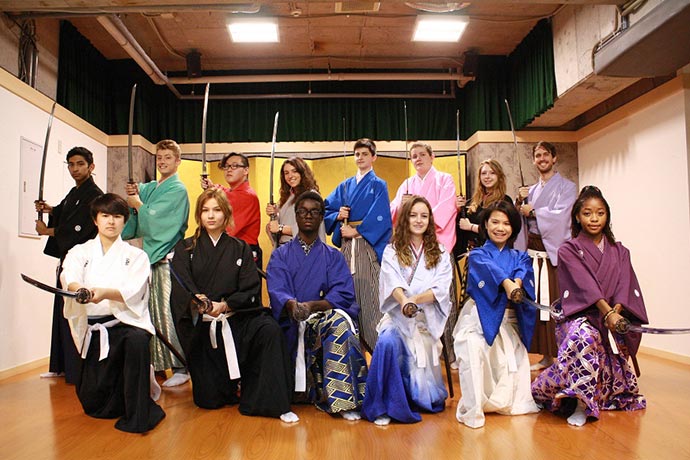
Samurai Kembu Theater
Kembu refers to the art of performing dances while brandishing a sword. Here, visitors can change into a kimono and hakama (garment worn around the waist extending to cover the legs, worn over a kimono), learn the methods and etiquette of handling Japanese swords, and find out about samurai culture so that anyone can feel the true spirit of the samurai. Simple lessons (7,000 yen for 60 minutes, including costumes), are very popular with foreign visitors.
- Access:
- 3-minute walk from Sanjo Station (KH40)
- Details:
-
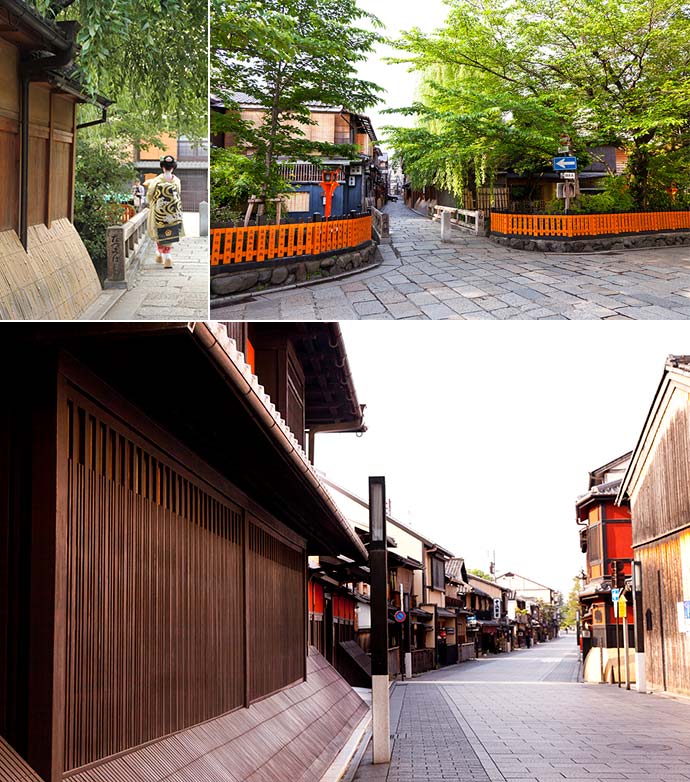
Gion, Hanami-koji, and an area along the Shira-kawa River
Hanami-koji leads through the center of the Gion entertainment district, with rows of long-standing stores, restaurants, and o-chaya (teahouses where maiko and geiko greet and receive customers). It is an area in the midst of a surge in popularity, frequented by many visitors both from within Japan and overseas who wish to experience its “old city” atmosphere. If you are lucky, you may even be able to see real maiko or geiko here.
- Access:
- 5-minute walk from Gion-shijo Station (KH39)
- Details:
-
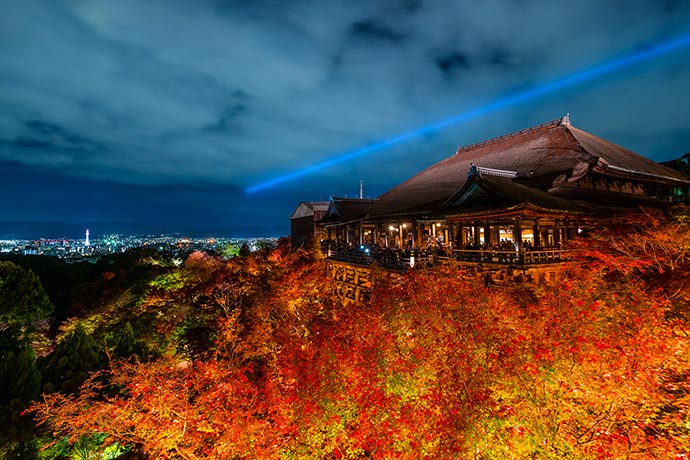
Kiyomizu-dera Temple
Kiyomizu-dera Temple, a place where the stunning beauty of the natural landscape of each season can be enjoyed from the “stage of Kiyomizu” extending from its main hall, is one of the most famous temples in all of Kyoto, with over 4 million visitors every year. Its ground contains magnificent structures including the bell tower, the three-storied pagoda, and an inner shrine building and other works are enshrined. The view of the temple and its ground towering out of the darkness for special night viewing is truly amazing (3 times every year in spring, summer, and autumn).
* Due to work on the main hall roof, it is covered until Spring 2020 and does not look as pictured.
- Access:
- 25-minute walk from Kiyomizu-gojo Station (KH38)
- Details:
-
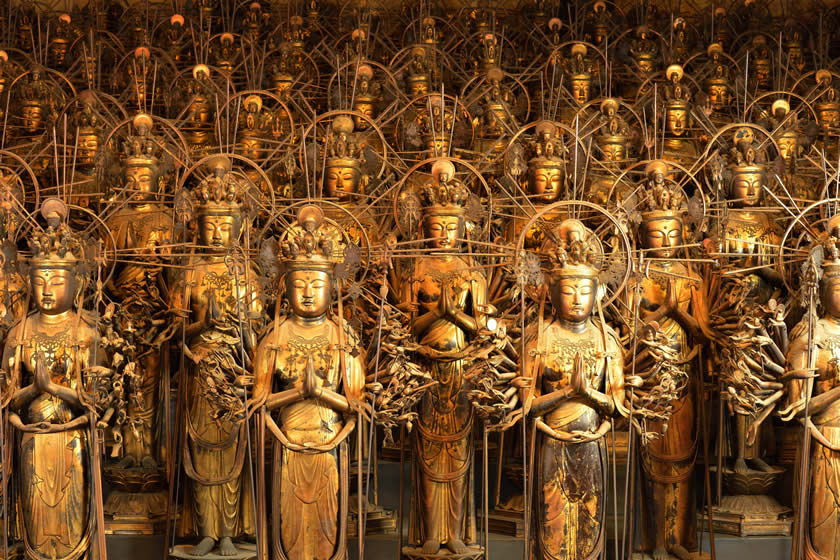
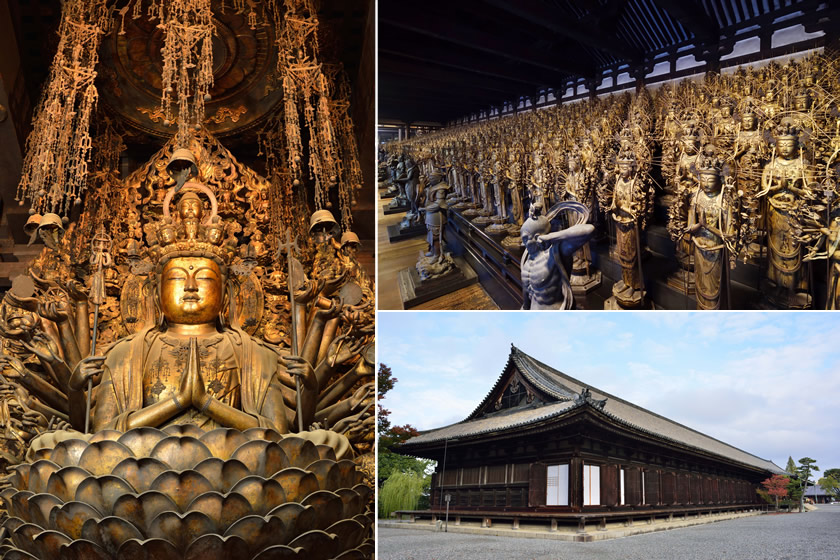 Photograph provided by: Myoho-in Temple
Photograph provided by: Myoho-in Temple
Sanjusangen-do Temple
The main hall of this temple, which extends 120 m (393.7 ft) north-to-south, with a depth of 22 m (72.2 ft), contains one seated figure of Senju-Kannon (a Buddhist saint of infinite mercy, who grants people salvation with her one thousand arms and eyes) measuring jo-roku (4.8 m / 15.7 ft) in height created by Buddhist sculptor Tankei, and rows of 1000 life-sized standing figures of Senju-Kannon (created in the 12th to 13th centuries). The spectacle of these statues, surrounded by statues of the wind god, Fujin, and the thunder god, Raijin, and the Nijuhachibushu (28 gods who protect the believers of Kannon) is simply overwhelming. All the Buddhist figures in the hall (1,032 of them) have been designated National Treasures.
- Access:
- 5-minute walk from Shichijo Station (KH37)
- Details:
-
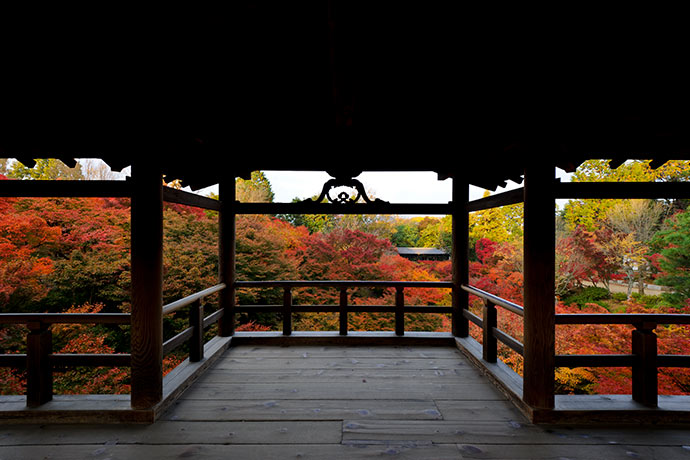
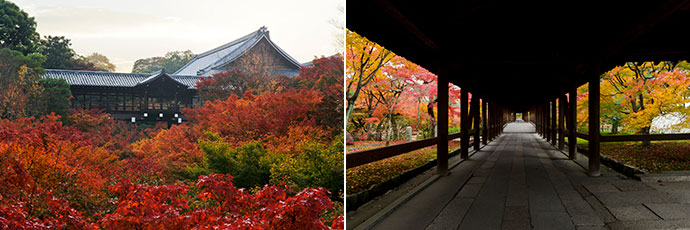
Tofuku-ji Temple
Built in the 13th century, Tofuku-ji Temple is a Zen temple from the Rinzai school of Zen Buddhism that currently has 25 sub-temples (temples within its grounds). It is one of the Kyoto Gozan, or Five Mountains of Rinzai Zen in Kyoto (temples of Zen Buddhism in Kyoto with high standing), which have many national treasures and significant historical buildings remaining in them. Its Tsutenkyo Bridge is highly popular for the splendid landscapes of its autumn foliage, and also offers spectacular views of fresh greenery in springtime.
- Access:
- 10-minute walk from Tofukuji Station (KH36)
- Details:
-
Day 2: Sightseeing at famous places on the routes of the Keihan Railway
Our first destination is Fushimi-Inari Taisha Shrine, a location that is especially popular even in Kyoto. It is recommended to go there early in the morning, before it becomes crowded with sightseers. After this, go to Byodoin Temple in Uji city by transferring from Chushojima Station to the Keihan Uji Line. Then ride the Iwashimizu-hachimangu-sando-cable from Cable-hachimangu-guchi Station to the Iwashimizu Hachimangu Shrine.
- Points of Interest:
- Fushimi-Inari Taisha Shrine, Gekkeikan Okura Sake Museum, Torisei main branch, Byodoin Temple, Fukujuen Uji Tea Workshop, Iwashimizu Hachimangu Shrine, night view of Hachikenya, L Kyobashi elevated street
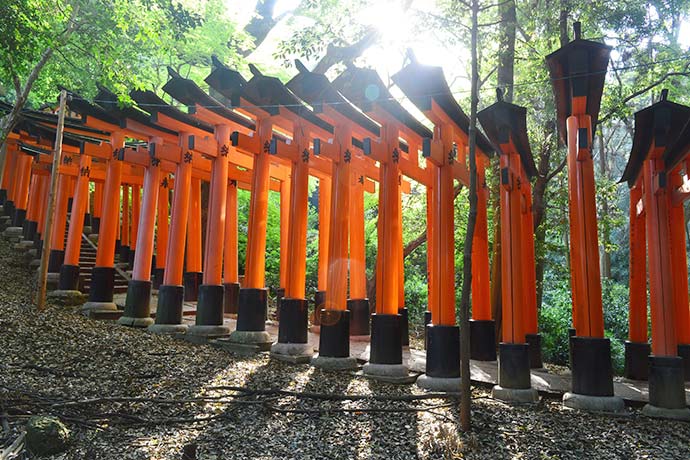
Fushimi-Inari Taisha Shrine
This is the sohongu (head shrine and origin of belief) of o-inarisan, or shrines dedicated to Inari, the god of grain foods, which are located across Japan. It has a proud history of roughly 1300 years, providing various blessings that include prosperity in business, agriculture, and fishery, as well as household safety and traffic safety. The mysterious sights provided by the path of vermeil-torii gates extending from the main shrine to Mount Inari are exceptionally popular with visitors both from within Japan and overseas. Especially senbon-torii is famous.
- Access:
- 5-minute walk from Fushimi-inari Station (KH34)
- Details:
-
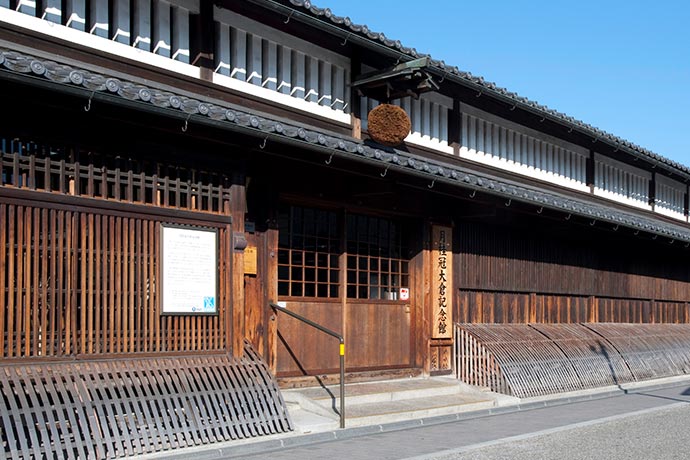
Gekkeikan Okura Sake Museum
A long-standing brewery of Japanese sake established in 1637, which has spread the culture of Japanese sake across the world. The Okura Sake Museum, containing exhibits on sake-producing tools, and the methods and history of sake-making in Fushimi, should not be missed. After touring the museum displays, you can also participate in tasting of Daiginjo (a type of high-grade sake brewed from raw materials consisting of over 50% polished white rice) and other types of sake.
- Access:
- 5-minute walk from Chushojima Station (KH28)
- Details:
-
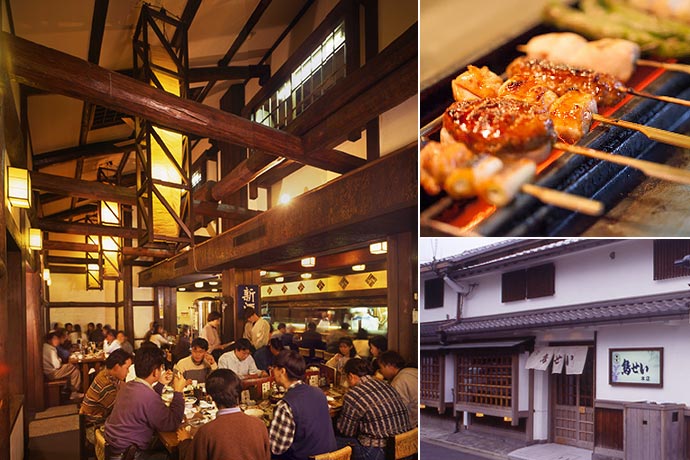
Torisei main branch
A famous establishment offering Japanese sake and chicken dishes. Located in a renovated long-standing sake brewery, it has a striking interior with a high ceiling and massive structural beams. It is always busy during both lunch and dinner with a wide selection ranging from grilled foods mainly using chicken, and hot-pot stews, to a variety of desserts.
- Access:
- 5-minute walk from Fushimi-momoyama Station (KH29)
- Details:
-
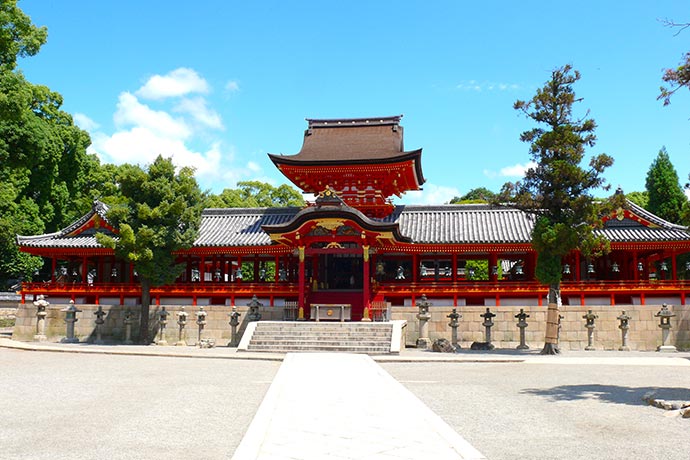
Iwashimizu Hachimangu Shrine
Named after the sacred spring “Iwashimizu” which pours forth from Mount Otoko, this is one of the Three Great Hachiman Shrines of Japan (three shrines representing Hachiman, whose shrines are the most numerous in Japan), and was constructed on the summit of the mountain during the Heian period(794 to 1185), when the capital of Japan was located in Kyoto. Its main hall, which was built using Hachiman-zukuri, one of the methods of construction used for Japanese shrines, is a national treasure. It receives many visitors throughout the year as one of the most prominent shrines for yaku-yoke (warding off evil and disaster) in the entire country.
- Access:
- 5-minute walk from Cable-hachimangu-sanjo Station after transferring to the Iwashimizu-hachimangu-sando-cable Line at Iwashimizu-hachimangu Station (KH26)
-
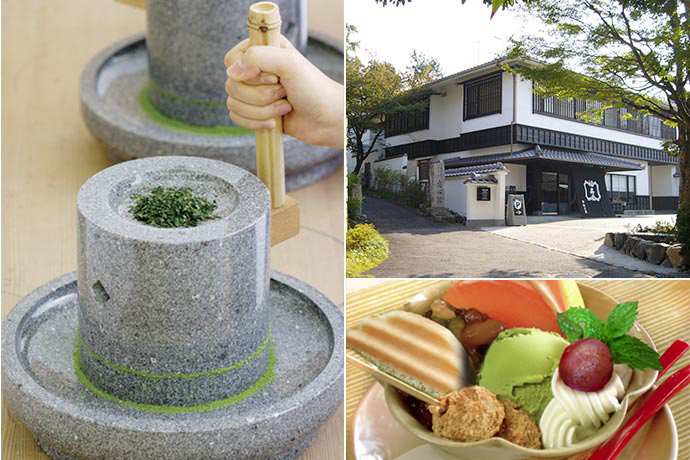
Fukujuen Uji Tea Workshop
This is a tea workshop located near the Uji River. The workshop offers activities where visitors can try their hand at some different aspects of tea-making, and also contains a tea-room to taste sweets and dishes made with Uji tea. Visitors can also view a museum with old wares for making tea and buy original teas at the shop.
- Access:
- 8-minute walk from Uji Station (KH77)
- Details:
-
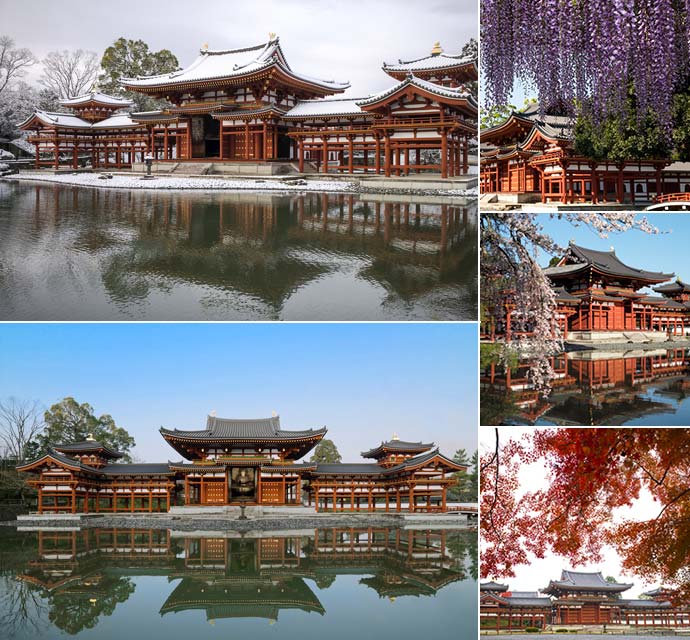 (C)Byodoin Temple
(C)Byodoin Temple
Byodoin Temple
Built in 1052, the Byodoin Temple’s Ho’o-do hall is a national treasure that has also been designated a World Cultural Heritage Site. The main roof of the hall is adorned with phoenix decorations, and seated statues of Amida Nyorai created by Buddhist sculptor Jocho are enshrined within it. The view of the temple hall reflected on Aji-ike Pond is one of unmatched splendor. The snow-covered scenery shown in the photograph is a sight of precious beauty.
- Access:
- 10-minute walk from Uji Station (KH77)
- Details:
This unlimited-use sightseeing pass is an economic and essential item for traveling in Kyoto
-
On this trip, we made extensive use of the discount sightseeing pass on the Keihan Railway, only available to foreign travelers in Japan. With just this one ticket, you can get on and off the Keihan Railway between Osaka and Kyoto to match your travel plans as many times as you wish during its valid period. It even lets you receive special complimentary bonuses at famous sightseeing spots. This is the key to getting the best value and the most enjoyment out of your one- or two-day Osaka-Kyoto trip!
